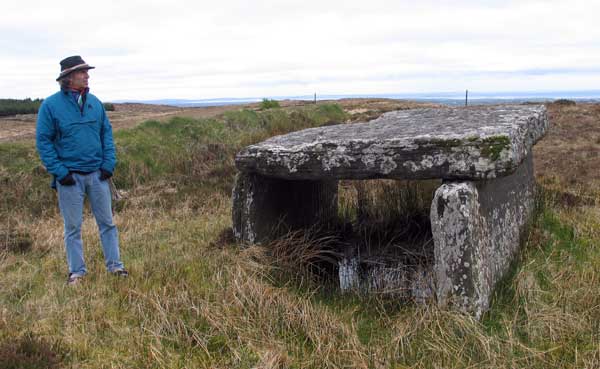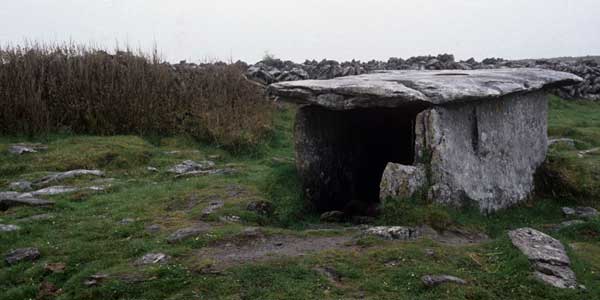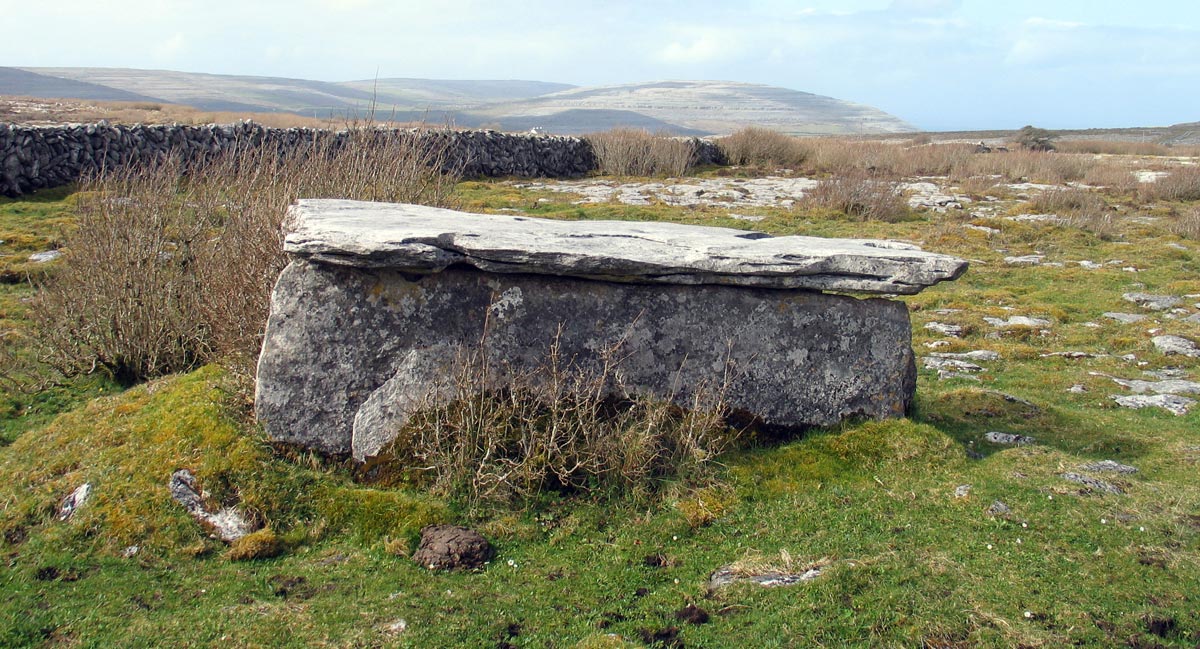The Burren Wedge Tombs
The amazing terrain of the Burren is made up of limestone karst, and is dramatic and unique amoung Ireland's landscapes. It is thought that the area was denuded of trees by the stone age people, which led to the soil being washed away and the landscape eroding. The naked limestone pavement is sculpted into hills called hums, which are scored by deep erosion gullies called grykes.
Although the landscape looks bare and denunded from a distance, there is actually an amazing amount of plant life growing there. The Burren has a large collection of rare alpine flowers which have survived here since the ice age. There are many varieties of orchid growing in the Burren.

The most common type of monument frond in the Burren is the wedge tomb, the newest and most common of the four four main types of monument found in Ireland. A great place to visit these monuments is at Parknabinna in the Burren National Park, Close to Kilnaboy and Carran, where there are some 15 examples concentrated in a cluster close to the road.

The Glinisheen wedge tomb, is located about one kilometer south of Poulnabrone dolmen, and is right beside the road, so is a very easy site to access. Wedges are the youngest form of megalithic monument found in Ireland.
They are named for their distcintive shape - a stone slabbed box which narrows towards one end, almost always the south west. They are also most common in the southwest of the country, with the greatest concentration being found in the Clare, Cork and Kerry region.

There are many of these monuments in the Burren, and they are associated with the Bronze age, dating from about 2000 - 1500 BC.
In the late 19th century a local boy who was avoiding school went and hid in this monument. Whilst hiding out, he found a piece of gold tucked into a crack, which turned out to be a fabulous gold collar which had been folded up and hidden. Today it is on display in the National Museum, where it is one of the central pieces on display in the gold.


